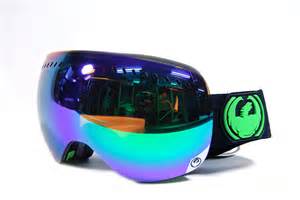How to Choose Ski Goggles
Ski goggles are designed to help you enjoy your time on the snow, by providing comfort and protection. Many variables should be considered prior to choosing your goggles, which include altitude, wind, and any obstructive material you encounter, like ice particles and tree branches. Here is a good list of the best ski/boarder goggles . Below is a guide on how to choose ski and boarder goggles.
How to Choose Ski Goggles
Goggle Frames and Fit
The goggles you choose should sit tight enough for safety, but not so tight that you are not comfortable. Some models provide appropriate fits for larger or smaller heads. The majority of frames are made from polyurethane, due to its flexibility and temperature control. While choosing goggles, consider the following:
Padding
As the name states, pads providing comfort for the face. The padding should provide cushion around face, and should not promote fogging inside the goggles. Some goggle types may use foam consisting of multiply layers, while other offer just one layer. Multiply layers provide additional ventilation that prevents fogging.
Helmet Compatibility
All goggles should be able to fit with any helmet. However, the quality of the fit is different from helmet to helmet. It is ideal to bring your helmet along when trying on goggles.
Strap Adjustments
Most goggle adjustment straps have a single slide adjustment, though some are made with an open/close fastener with sliding buckles on both sides to make adjustments. Goggles specifically made for children are likely to have a non-adjustable strap.
Over the Glass (OTG) Styles
OTG goggles provide space on the interior of the goggles to accommodate prescription glasses. If you wear prescription glasses, you will require this style of goggles. OTG goggles reduce the pressure on the temples and nose as a result of wearing goggles over prescription glasses. Oakley is well known for their style of goggles.
Goggle Lens Shape
Cylindrical Lenses
This surface of this lens is flat up in the middle between the nose and forehead, but the contour from left to right is conical (curved). These lenses are generally less expensive than spherical lenses, but the flatness causes glare problems and the peripheral vision is significantly reduced.
Spherical Lenses
This type of lens curves both up and down, and left to right. Conical spherical lenses provide greater peripheral vision, reduced distortion in your line of sight, and reduce the glare from incoming light. However, spherical lenses are considerably more expensive.
Light Transmission and Lens Color
The color of the goggle lenses are important to the light filtration. It also significantly affects the eyes interpretation of the surrounding environment, also known as visible light transmission. Smith goggles offer a wide selection of lens and with a variety of colors.
Lighter Tints
Lighter tints let in more light. Colors such as yellow, green or light red, will be most useful on days when the sun is concealed.
Darker Tints
Darker tints such as, brown and gray let in less light and are more useful on days in which the sun is shining in the fullness of her strength.
If you spend a lot of time on the slopes, it would be advantageous to own a pair of both light and dark colors to accommodate the weather changes. Bolle goggles has good selection of tinted ski goggles.
Goggle Ventilation / Anti-fog Protection
When the warmth from your body, comes in contact with the outside cold, condensation forms inside your goggles. Goggle manufacturers have a variety of methods for combatting the formation of fog with in the goggles.
Vents
Some goggles are constructed with vents on the top and bottom in order to control the presence of condensation within the goggles. Larger vents work better, but will expose your face to cold air.
Double-layered Lenses
Essentially all goggles are designed with double-layered lenses due to its anti-fogging properties. The double layer creates a thermal barricade, reducing chances for condensation inside the goggles.
Anti-fog Coating
Much like RainX repels water from a car windshields, anti-fog coatings inhibits the formation of fog on goggle lenses. Majority of medium to high grade ski goggles, have an anti-fog coating included into the manufacturing process.
Fans
Though not very common, there are some high end goggle manufacturers that utilize fans to reduce fog. These fans are compact and battery operated, and in some cases the fans are adjustable.
Additional Lens Options
Digital Display
Digital display lenses offer provide a trendy technological aspect. They display various information, including GPS information, temperature, time, and much more on the inside of the lens.
Interchangeable Lenses
As the name describes, you can change the lenses out to suit your specific need.
Mirrored Lenses
A mirrored lens reflects more light than traditional lenses, but might slightly reduce your vision.
Photochromic Lenses
These lenses automatically transition as light intensity changes.
Polarized Lenses
Polarized lenses are a hit in most outdoor sports. Snow sports are no exception. These lenses filter light reducing the glare.
UV protection
Essentially all goggles made today offer total UV protection.
